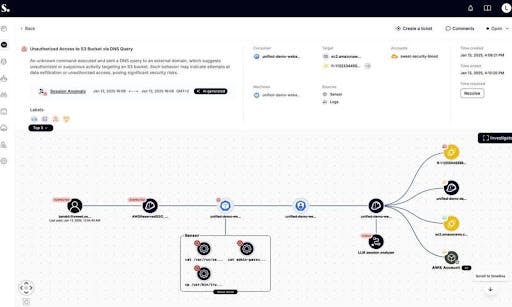There’s something about a map that makes us feel like pirates. Argh! 🗺️ 🏴☠️
And while a site map might not lead to buried treasure, it will create a better user journey, which helps more website visitors do the thing you want them to do—like buy products or contact sales team members. And when it comes to your business’s websites, creating a successful customer journey is pure gold. 👑
A site map template can help you navigate the sometimes rough seas of your website design process. It lays out a clear organizational structure for your website, and all you have to do is fill in the webpages you want to include.
You and your team can organize and reorganize the information before you start your design process so that, by the time you start building your site, your whole team will be on board. And you’ll be able to avoid costly last-minute changes and redesigns. From a project management standpoint, a website site map template ensures smooth sailing! ⛵️
So, before you get tired of our pirate puns, let’s take a look at 10 of the best sitemap templates to serve as the wind in your sails during your web design voyage.
What Is a Site Map Template?
A site map template is a visual representation of your website architecture—or the layout of your website. It’s similar to a mind map in that you’ll start by brainstorming all of the content you need to include on your site. Then you’ll organize your brainstorming session into a hierarchical flowchart, grouping related information together. You’ll use templates to guide you as you organize your website content flowchart.
A site map and site structure template typically lays everything out already with a visual site map example. You’ll see the homepage at the top. The homepage branches out into category pages, which branch out into sub-category pages, and then into individual web pages. All you need to do is fill in your site map template with the categories, sub-categories, and web pages that are relevant to your business.
Let’s say you’re organizing an e-commerce clothing site. Your category pages might be women’s clothes, men’s clothes, and kids’ clothes. Then the subcategories under women’s clothes might be dresses, tops, and bottoms. Under the subcategory pages, you’ll add individual product pages. 👗
While the categories and subcategories will differ from one business to another, almost every website on the internet uses this architecture because simple site maps have a layout that’s easy for your customers (and search engines) to navigate. 🧭
What Makes a Good Website Map Template?
When you’re choosing a website site map template, look for these features that will make it easier for your team to use:
- Clear visuals: This is a visual sitemap so you should be able to take one look at it and instantly understand how it works.
- Multiple use cases: Some websites have simple layouts with only a few pages. Others are extremely complicated with dozens of categories, hundreds of subcategories, and thousands of web pages. Make sure your template can be easily expanded to add more categories and pages.
- Drag-and-drop organization: A site map template is part of the initial brainstorming process, which means you should be able to play around with it and try different ideas on for size. Being able to drag and drop webpages makes it easy to experiment with different organizational and visual sitemap structures.
- Commenting and collaboration features: Building a website requires help from cross-functional teams. You can make it easier for everyone to work together by choosing a template that allows for commenting and visual collaboration so everyone can add their ideas.
10 Site Map Templates
Design your website layout and do so much more with these 10 visual sitemap and website project management templates. They’re all free templates, available through . All you have to do to get access is head to the pricing page and sign up for a free account.
1. Sitemap Template
The Sitemap Template will help you organize your website content in an intuitive format. (Intuitive like your website is about to be!)
The flowchart layout will be familiar to everyone on your team—it looks just like those family trees you had to make in school with Granny at the top (in this case, Granny = your homepage) and all her kids (landing pages) and grandkids (niche topic pages) underneath. Plus, when you use this flowchart to organize your website structure, you’ll be able to create a visual sitemap that’s so easy to navigate, even Granny can do it. 👵🏻
The whiteboard-style template is great for brainstorming and facilitating visual collaboration among cross-functional teams. You can invite multiple stakeholders to comment on and edit your website sitemap. So by the time you start building your site, you’ll know your development, design, and content teams are on the same (web)page. 📖
It also comes with a quick start guide that can serve as your tutorial for organizing your site maps with just a few clicks.
2. Website Development Template
From creating your sitemap to building your wireframes to launching your new website, the Website Development Template is a software development project management tool that will take you from start to finish.
This sitemap template has 18 different statuses to help you track your workflow, including Discovery, Design, Development, Testing, Not Started, Needs Review, To Do, Complete, Published, and Live. It can serve as a complete work plan template to help you organize not only your website structure but also your team members’ responsibilities.
This is a sitemap template and then some! It’s ideal for teams who want to manage their web development project from a single home base. 🏡
3. Website Production Plan Template
If you have a complicated web development project, the Website Production Template will help you organize your developers, plan new features, and determine how they fit into your site map—all while keeping everyone on the same page.
This website project management template allows you to organize sprints and manage themes, epics, and user stories with simple drag-and-drop functionality. You can also set multiple assignees, add dependencies to your assignments, and mark tasks as high priority. 🚩
With this template everyone on your team will understand the hierarchy of your website architecture, as well as the hierarchy of their own assignments.
There are even built-in automations to make your website planning process easier. And your team members can add a Chrome extension to keep track of their upcoming assignments, no matter what they’re working on.
4. Website Design Project Plan Template
The Website Design Project Plan Template will help you align your design team.
With this template, you can organize tasks for the planning phase of your website design process (like building your site map), then add tasks for the design team, the development team, and the eventual launch of your new website. This template’s features help you organize meetings, plan your process, and schedule tasks. 📆
You can also set expectations so everyone on your team understands the marketing goals behind your website design. And with its simple column-based layout, team members can easily see where different tasks are in the process. 👀
Looking for more design templates? Check out these free graphic design templates!
5. Website Migration Project Plan Template
A website migration allows you to reorganize your current HTML and XML sitemaps so you can create a more intuitive customer journey and make it easier for search engine crawlers to understand the hierarchy of information on your website (and rank your site for the right topics).
If you do it right, your site could start to climb in search engine rankings—maybe even claiming that number one spot. 🏆
But if you do it wrong, you could inadvertently create a bunch of 404 error pages, frustrating users, increasing your bounce rates, and wrecking your SEO score. Use the Website Migration Project Plan Template to avoid this terrifying fate. 😱
This template is essential software for SEO teams. It will help you get organized so you don’t miss a single redirect.
6. Website Project Plan Template
With projects as complex as website design, sometimes it’s hard to see the forest through the trees. The Website Project Plan Template gives you a mile-high view. You can keep track of the team members involved, their workload, the process owners for each task, the budget, the task completion rate, and the phase of development you’re in.
All of this information is presented in a simple list view with color-coded statuses. So in one glance, you can see the forest. 🌲
You can also create web logs that house important project information, like the site map or the process for getting wireframes approved. This template will serve as an essential resource that gets your team through the website design process and out of the woods.
7. Website Planner Template
You can easily stage your website design project with the Website Planner Template. It’s laid out with columns for every stage of your design process.
Schedule a kick off meeting, come up with your marketing goals, conduct market research, and create user personas during the ideation stage. 💡
Then move onto the planning stage by creating your site map and establishing the content and design assets you need. Get into the design stage by building wireframes and writing content.
Move onto the building stage by scheduling reviews with your developers. Then, monitor and improve your site with a testing stage where you can review your pages and issue bug reports. 🪲
This template breaks your entire web design process down into manageable steps. 🪜
8. Website Scope of Work Template
A must-have for design agencies, the Website Scope of Work Template establishes what’s going to be included in a website build (and what’s not)—before you start work on a new client project.
This template can keep client projects manageable and ensure that you give accurate quotes and manage your agency’s resources correctly.
You’ll use this template when you sit down for that first prospective client meeting. It will help you outline deliverables and set project milestones that you and your client agree on. 🤝
Once you start on the project, the deliverables you outlined in this template will be the content you include on the new website. All you’ll need to do is plug them into your site map template to get organized.
9. Web Design Template
If your design team gets a lot of requests from a lot of different stakeholders, you can manage them all with the Web Design Template. This template is ideal for agency teams or teams that function like an internal agency.
With this template, your clients and stakeholders can submit their own web design requests. They’ll fill out a form explaining what kind of web assets they need and how those assets fit into their site map.
Then you can add information on the complexity, deliverables, and cost of different requests. You can also use this template to monitor your designers’ capacity so none of your team members end up overworked.
Pair it with your favorite AI marketing tools, and you can even turn client requests into tasks automatically—because project management templates plus AI is our favorite pairing. 🍷🧀
10. Blog Database Template
If there’s one part of your website that’s never done, it’s your blog. You can have hundreds of pages of content nestled under this one small section of your site map. And if you want to rank high in search engine results, you’ll need to continuously publish new blog content.
So you’ll need a content calendar to keep track of all the new blogs your team is creating. The Blog Database Template helps you manage your content creation process. You can create tasks for new content topics and move your blog articles through the writing and publishing process—from Planned to In progress to Published to Update required.
With this content calendar template, your team will always know what to write next. 👩💻
Set Your Sights on the Perfect Sitemap Template
From simple diagram templates to complex project management templates, you can get your website design process into shipshape with . ⚓️
Sign up for a free account to start using any of the templates you saw above. We have the resources to get you through all parts of the website design process. You can plan your initial website build, manage a site migration, or create an ongoing content calendar for your blog.
We might not be real pirates, but we are real project managers. And we know what web development projects need to ensure a smooth launch. A good project management template is our personal version of a treasure map. 🗺️
Get access to our free resources today!


Everything you need to stay organized and get work done.




















